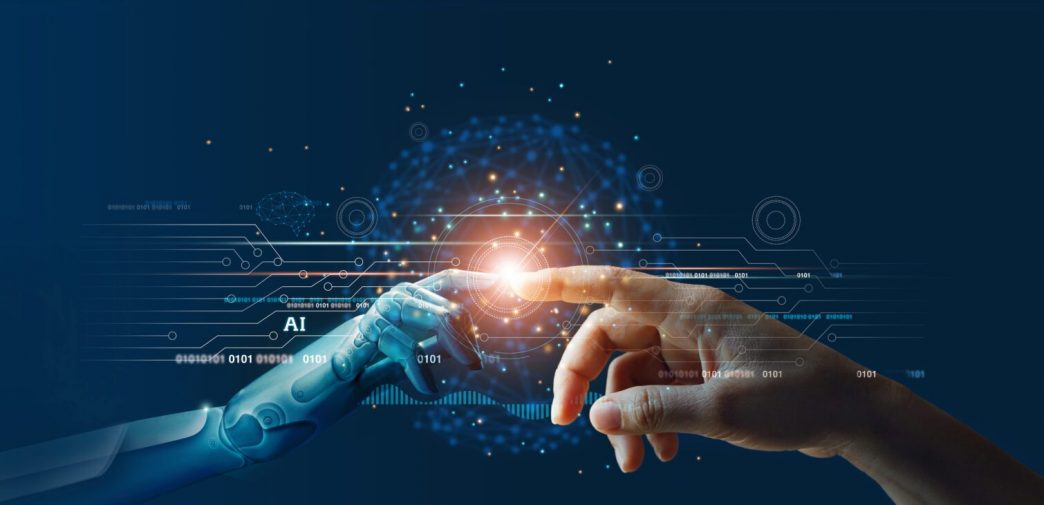The design world is changing as artificial intelligence (AI) transforms the landscape. AI tools like IdeaScale and Synthetic Users are revolutionizing our design approach, from collecting, crafting and innovating ideas to crafting entire experiences. But what does this mean for human designers? Are we witnessing the designer’s death, or is there a more nuanced story to tell?
1. The Death of the Designer?
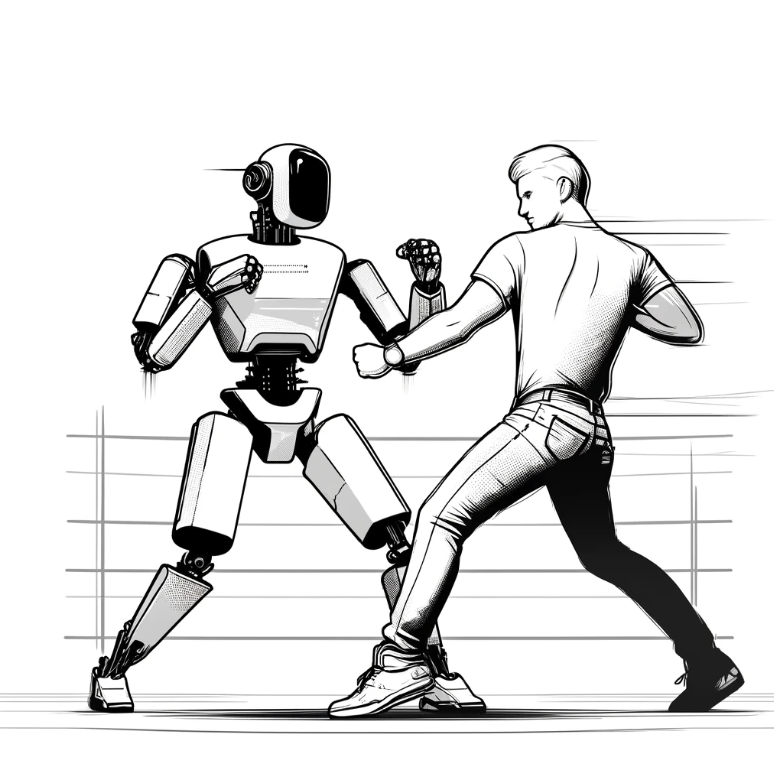
Hypothesis: Hasta La Vista, Designers!
Imagine a world where ideas are willingly submitted, functional prototypes are built by AI, and entire products are designed, manufactured and engineered at the tap of a button…. with built-in market insights testing tools. The convergence of AI-integrated business processes is making this a reality. These tools work tirelessly, never complain, and produce results at lightning speed. Bruce Mau, a design guru, once said, “Design is invisible until it’s bad.” With AI consistently delivering good design insights, will human designers become obsolete? — How might we design tools that outperform us?
Against: Designers The Unsung Heroes
Let’s take a step back, AI enthusiasts! Design isn’t just about processes. It’s about a deeper understanding of human needs, crafting emotionally resonating experiences, and solving complex problems. Can AI truly grasp cultural nuances or user psychology? And what would the world look like if businesses were run by Big AGI systems with only 100 employees?
Don Norman, a usability expert, said, “Good design is actually a lot harder to notice than poor design, in part because good designs fit our needs so well that the design is invisible.” That invisible, seamless experience is the human touch that AI can’t replicate…?
My Take:
Designers, your roles could be disappearing…. But can we design AI to make us required and use it to enhance our strengths? Think of AI as a powerful sidekick, handling repetitive tasks and freeing you to focus on strategic decision-making and human connections. In this AI-powered world, design thinking, emphasising empathy and collaboration, is more crucial than ever.
2. The Rise of the Design Cyborg
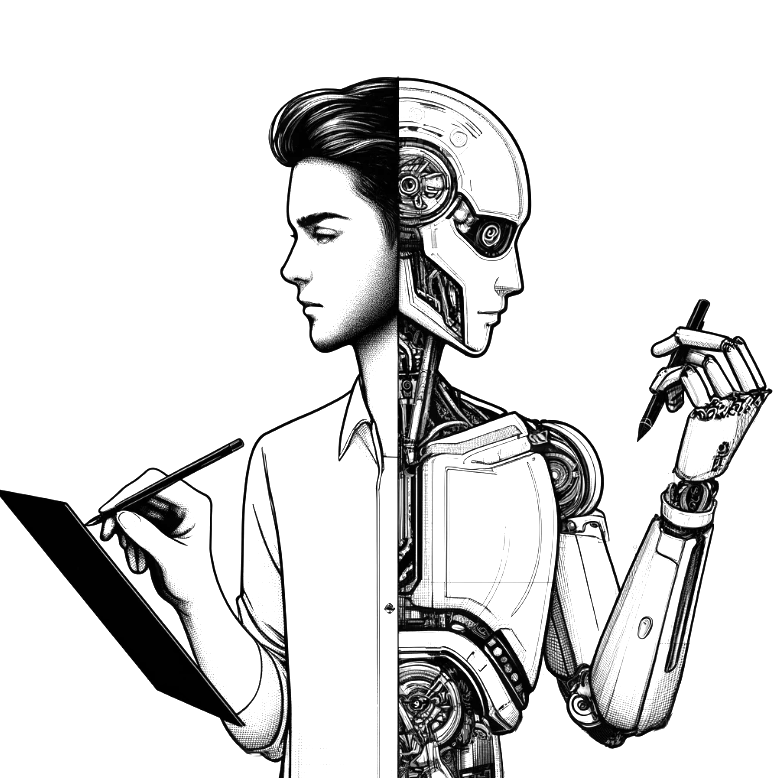
Humans: The Weak Link
Humans are slow, error-prone, and biased. We get tired, make mistakes, and cling to outdated ideas. AI, on the other hand, is fast, precise, and objective. As futurist Ray Kurzweil predicts, “By the 2030s, we will connect our neocortex, the part of our brain where we do our thinking, to the cloud.” Will human minds be necessary for the design process, then?
Humans + AI: The Dynamic Duo
Not so fast! Humans and AI are not competitors; they’re collaborators. We each bring unique attributes to the design table. Humans excel at creative thinking, intuition, and emotional intelligence, while AI offers speed, precision, and data-driven insights. Neri Oxman, a visionary architect, said, “The future of design is not about making things; it’s about making things that make things.” In the future, humans and AI will work hand-in-hand.
My Take
The rise of the design cyborg is an exciting opportunity. Embracing AI as a partner can unlock new levels of creativity and innovation. It’s about finding the right balance and leveraging AI’s strengths while preserving the uniquely human qualities that make design meaningful.
The AI Design Paradox
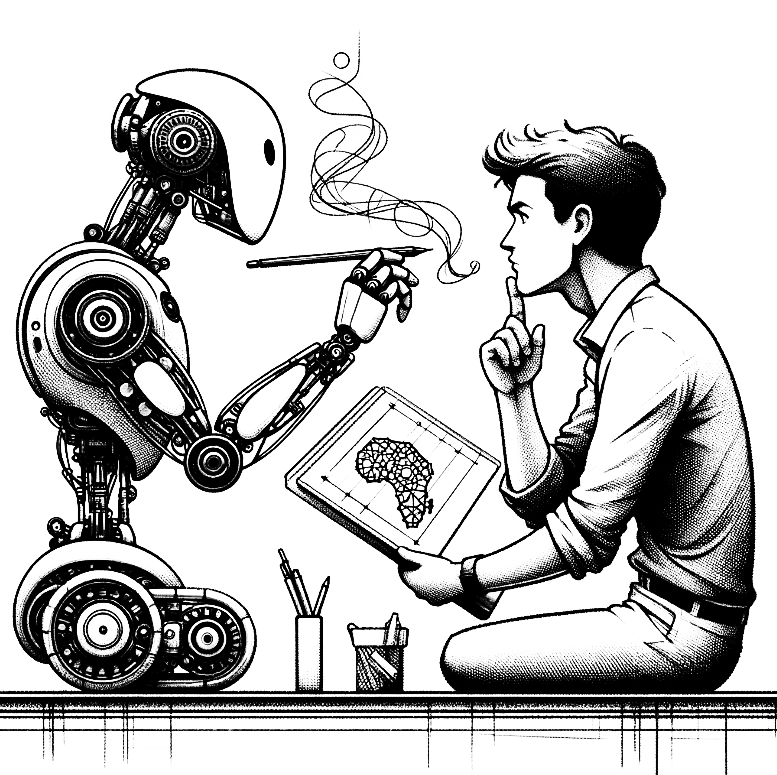
The Singularity is Near!
AI is generating designs that surprise and delight. Algorithms sift through massive datasets, identify patterns, and generate novel solutions. Remember IBM’s Watson cooking up bizarre yet delicious recipes? As AI evolves, it might surpass human creativity, ushering in a new era of machine-led innovation. Buckminster Fuller once said, “There is nothing in a caterpillar that tells you it’s going to be a butterfly.” Are we witnessing AI’s caterpillar stage?
Humans Still Hold the Creative Keys
Let’s not get swept away by the AI hype. AI can generate variations on existing themes, but can it truly create something original? Creativity, as Steve Jobs said, is “just connecting things.” It involves intuition, lived experience, and those “aha” moments. AI might be useful, but the human mind ignites the creative fire.
My Take
AI pushes design boundaries, but calling it a “singularity” seems premature. Creativity is messy and unpredictable, something AI still lacks. The real magic happens when humans and AI collaborate, each bringing unique facets.
The End of Intuition?

AI: The Empathy Imposter
Let’s be real, folks: AI is just a bunch of ones and zeros masquerading as empathy. It can analyze data and churn out insights, but can it truly understand complex emotions and cultural nuances? Empathy isn’t just data points; it’s about lived experience and shared understanding. Paula Scher said, “Empathy is the most important tool in a designer’s toolkit.” AI might have tools, but it lacks heart.
AI: The Empathy Amplifier
That being said. AI can be designed to enhance empathy by uncovering hidden patterns and insights from vast user data. It helps us understand user behaviour and pain points on a deeper level. AI can be a powerful tool in the Design Thinking toolkit, helping us better serve user needs.
My Take
AI can be an ally in empathetic design, but it’s not yet a substitute for human empathy. The best designs blend AI’s analytical power with human emotional intelligence, balancing data-driven insights and human intuition.
The AI Design Addiction
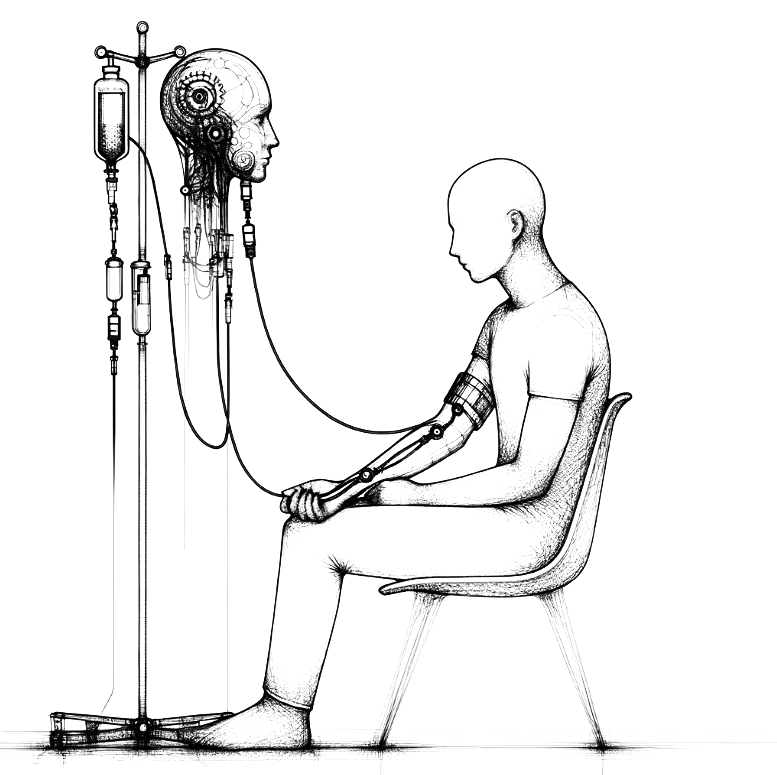
AI: The Creative Crutch
AI tools are like digital candy: easy to access, instantly gratifying, and addictive. Too much reliance on AI can rot creativity. Why brainstorm or sketch when an algorithm can generate a solution? Natasha Jen warned, “The danger is becoming so reliant on the machine that we lose our ability to think critically and creatively.” Are we sacrificing long-term growth for short-term convenience?
AI: The Creative Catalyst
That’s an overreaction! By automating repetitive tasks, AI frees designers to focus on big-picture ideas and push creative boundaries. John Maeda said, “Design is not just what it looks like and feels like. Design is how it works.” AI helps us design better by working smarter.
My Take
AI can be both a creative crutch and a catalyst. The key is to use it wisely, recognizing its strengths and limitations. Designers who embrace AI unlock new productivity and innovation levels. It’s about balancing the use of it.
My Conclusions
As we stand on the precipice of an AI-powered design revolution, it’s clear that the future is both thrilling and intimidating. Will designers be replaced by tireless, caffeine-free AI robots, or will they evolve into supercharged design cyborgs, blending human intuition with machine precision? Only time will tell.
But let’s not rush to clear our desks just yet. After all, who else but a human could spend hours agonizing over the perfect shade of ‘millennial pink’ or the subtleties of a font choice in a business PowerPoint that screams both ‘innovative’ and ‘trustworthy’? And can an AI truly appreciate the joy of a perfectly executed brainstorming session over coffee?
As we welcome our new AI colleagues, let’s embrace the change with open arms and a dash of dark humour. After all, it’s not every day you get to work alongside an AI that never needs a lunch break or a sick day. Just remember to keep your sketchpad close and your creativity closer. Because in this brave new design world, the human touch will, hopefully, always set us apart.
So, here’s to the future of design: part human, part machine, and entirely exciting. Now, if you excuse me, I need to consult my AI assistant about what shade of blue best conveys ‘facetious professionalism.’

